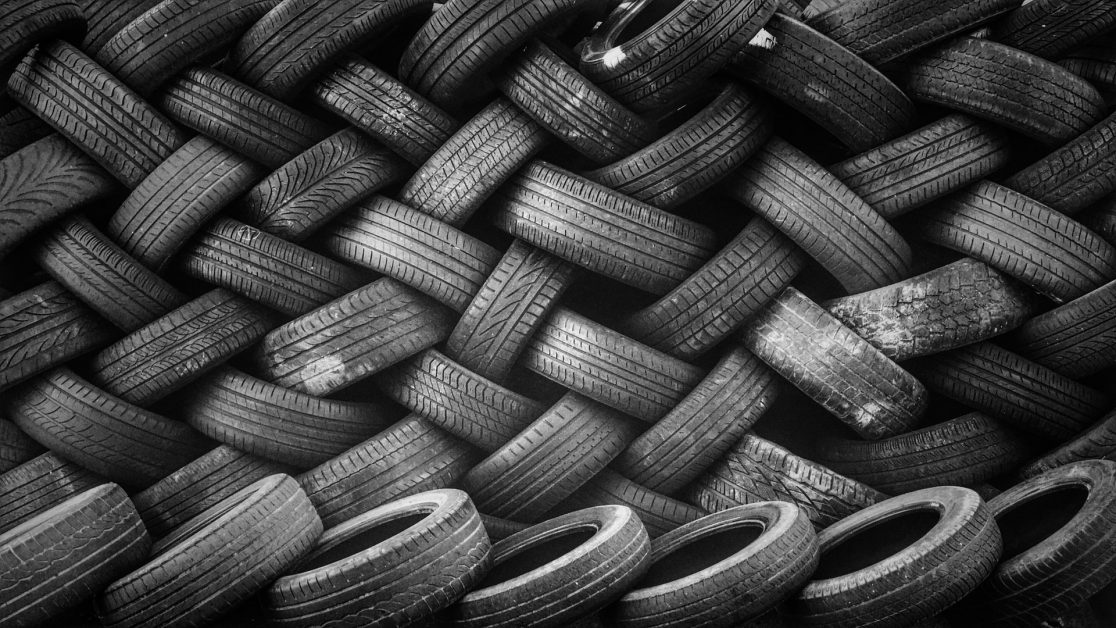Latex has been used for centuries. It was harvested in liquid form from the Hevea Brasiliensis tree by Latin American tribes in 1600 BC. Centuries later, it made its way around the world in the 1800s. With an annual consumption of nearly 6 million tonnes today, latex has grown to be a resource we can’t live without.
Since latex comes from trees, you would think that latex would automatically be biodegradable and eco-friendly.
Unfortunately, that isn’t always the case.
In this article, we’ll be covering the key aspects of latex and its impact on the environment.
Is Latex Biodegradable?
Yes, natural latex rubber is 100% biodegradable.
The rate of biodegradation is fairly slow because the growth rate of bacteria from the consumption of latex is also slow.
Latex rubber is a poor source of food for bacterial colonies which means it takes longer to break down. A rough time period is anywhere between 6 months and 4 years for latex to biodegrade completely.
The process isn’t instant but compared to plastic, natural latex is far better for the environment.
Are Man-Made Latex Products Biodegradable?
No, the addition of chemicals makes biodegradation much harder and sometimes impossible
This is also the case for materials and products that claim to be made with “natural latex”.
Latex products are often treated with ammonia and with tetramethyl thiuram disulfide plus zinc oxide. These chemicals are designed to protect and preserve latex products to increase their lifespan.
This makes biodegradation or bacterial decomposition impossible.
This is to be expected when you consider that rubber is used for tires and other safety critical products.
The very definition of something being biodegradable means that it can be decomposed back into natural elements (usually carbon and water) through bacterial consumption. Preservatives stop bacteria from doing just that.
Most companies claim that their products are made with “natural latex” when usually it is chemically modified latex. The only way to be certain is if the company states that the latex it uses is 100% biodegradable with no added preservatives or chemicals.
Is Latex Eco-Friendly?
Not entirely. Natural latex biodegrades fairly quickly but there are several other environmental impacts that should be considered.
The main producer of latex, the Hevea Brasiliensis tree, makes latex as a defence against insects.
Latex discarded within a natural environment can cause similar issues to plastic waste. For example, some animals can be poisoned by certain types of latex.
Since it takes 6 months to 4 years for even natural latex to break down, there is plenty of time for animals to be affected.
As for synthetic or chemically-treated latex rubber, toxins can be released into the soil and surrounding environment once the rubber eventually starts to biodegrade.
Biodegradable doesn’t always mean eco-friendly.
What Can We Do to Make Latex More Eco-Friendly?
Here are a few ways to make latex more sustainable.
1. Keep Latex Out of Landfills and Natural Environments
When latex ends up in a landfill, it takes much longer to biodegrade. This is because landfill sites lack both the environmental and bacterial factors required for biodegradation.
And for reasons listed earlier, you don’t want to litter the ground with latex products.
Never release balloons into the sky. They are harmful to natural life and also disrupt power lines and cause power outages.
If you must buy balloons, make sure they are biodegradable balloons. They are made from natural latex and will break down over time.
Be sure to reuse or compost them when done.
2. Recycle Your Latex Items
Many people use latex gloves and masks. Companies like TerraCycle will recycle your disposable latex products for a small fee.
This is useful because many local landfill sites won’t recycle latex products. If TerraCycle isn’t an option, look for local companies that will recycle your latex for you.
Be sure to clean these items before recycling. Many waste processing plants will not recycle dirty latex and some will even dispose of them in landfill.
3. Use Vulcanized Rubber
Vulcanized rubber is natural latex rubber which has been heated and treated with sulfur, peroxide, or bisphenol. This improves the latex’s elasticity, resistance, and longevity.
What’s great about vulcanized rubber is that it’s still biodegradable. Bacteria is still able to degrade and decompose vulcanized natural rubber unlike chemically-treated or synthetic rubber.
Just make sure to treat it like other forms of latex rubber. Reuse or recycle it.
4. Compost Your Latex Items
One of the best options for being environmentally conscious with latex is to compost it.
Composting latex creates a nutrient-rich mulch that’s great for gardens and plants.
This includes biodegradable latex balloons too.
Conclusion
Latex is a useful product that won’t be replaced in the near future.
It is biodegradable but we shouldn’t rely on that fact by discarding it where it can harm the environment.
We need to make sure we use it responsibly and reuse and recycle it where practical.
This is even more important when using chemically treated latex products.
